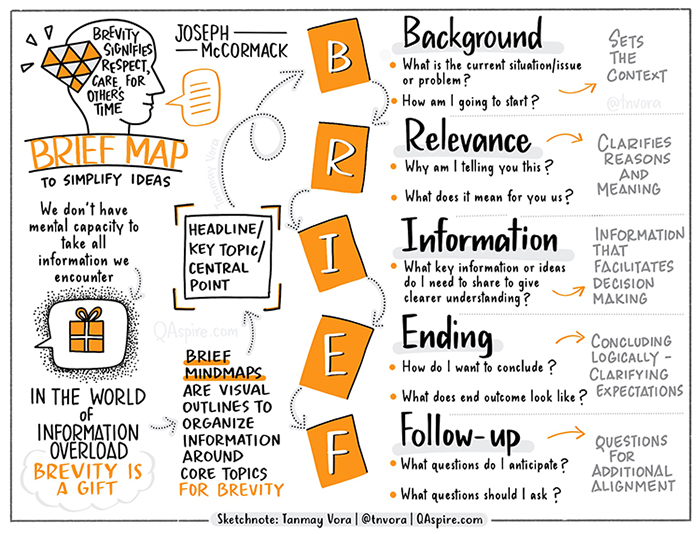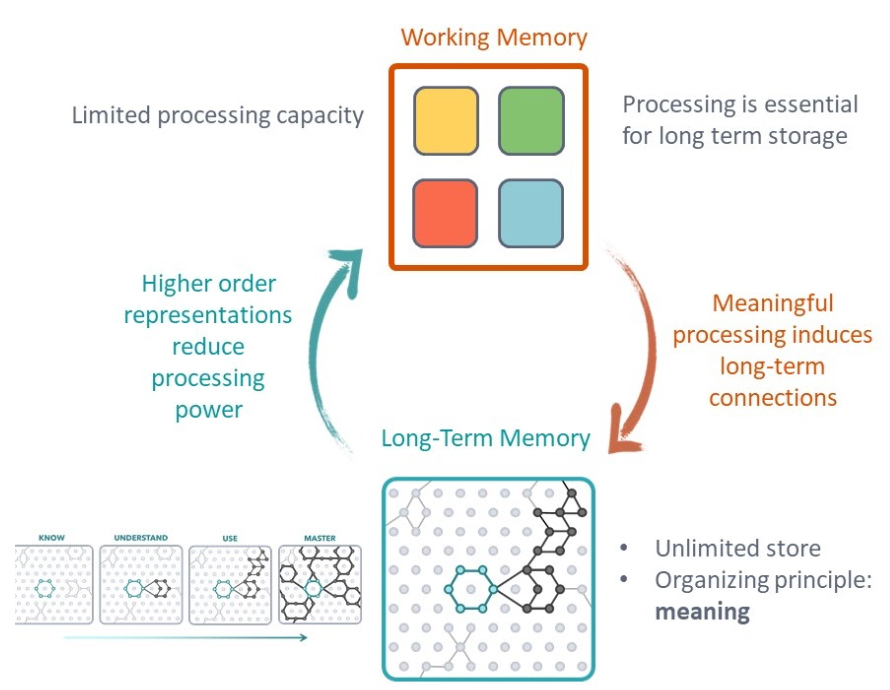The Art of Active Listening | The Harvard Business Review Guide — from Harvard Business Review out on YouTube.com by Amy Gallo; with thanks to Roberto Ferraro for this resource
Top challenges for L&D leaders in 2023 — from chieflearningofficer.com by Ken Blanchard
Excerpts:
From an HR perspective, survey respondents reported that the biggest challenges they expect as HR and L&D leaders in 2023, in ranked order, are:
- Capacity and resources
- Turnover and attrition
- Improving engagement and experience
- Adapting to a hybrid culture
From DSC:
I wonder if many in higher education might respond similarly…? Perhaps some even in the K-12 space as well.
Also see:
This posting from William Kennedy-Long (re: instructional design) out on LinkedIn:
Excerpt (emphasis DSC):
I read Clark Quinn’s outstanding article which I highly recommend reading, entitled Performance Focus For Deeper Learning Design.
Immediately, I was captivated by what it and he had to say, such that I wrote a short piece to follow up on it.
What are on-ramps? Here’s how to build them for all adult learners to reach their academic potential — from chieflearningofficer.com by Michelle Westfort
Excerpt:
This may come as a surprise — adult learners over 25 make up nearly 40 percent of today’s U.S. undergraduate population at colleges and universities. However, these learners often find themselves treated as outliers by institutions designed for traditional students, which leads to poorer learner outcomes and, as a result, barriers to social mobility.
To ensure adult learners can meaningfully participate in your workforce education program, organizations can build on-ramps capable of accommodating all learners.
On-ramps provide employees access to high-quality academic programs, enable them to continue their educational journey toward a degree or certification by meeting them where they are, and hold a key role in paving the way for successful learner outcomes.
Leveraging 2022’s future-forward lessons to improve L&D — from chieflearningofficer.com by Keith Keating
Excerpts:
Top 4 future-forward lessons from 2022:
- The world changes rapidly — prepare for it
- Anticipate trends, events and the skills you’ll need in the future
- Continuously adopt new capabilities and expand your knowledge
- Use tech to your advantage
ChatGPT is changing the game, and I want to share real things you can do with this AI system today.
Please save this thread and start testing this technology NOW so you’re ahead of the curve.
— Allie K. Miller (@alliekmiller) December 13, 2022
How to Communicate with Brevity — from qaspire.com by Tanmay Vora; with thanks to Roberto Ferraro for this resource
We live in a world of information overload. In such a world, communicating with brevity is a gift to others.
Udacity’s Train-to-Hire Program Now Available in AWS Marketplace — from prnewswire.com by Udacity; with thanks to GSV for this resource
Excerpt (emphasis DSC):
MOUNTAIN VIEW, Calif., Nov. 29, 2022 /PRNewswire/ — Udacity, the digital talent transformation platform, today announced the availability of its Train-to-Hire Program in AWS Marketplace, a digital catalog with thousands of software listings from independent software vendors that make it easy to find, test, buy, and deploy software that runs on Amazon Web Services (AWS). With the addition of this program, AWS customers can now address technical talent gaps in their organizations by working with Udacity to create customizable, hands-on learning programs that attract and upskill net-new sources of talent. Through these Train-to-Hire Programs, AWS customers can transform the breadth and depth of their talent pipelines, lowering recruiting costs for in-demand roles and improving the diversity of their workforce by offering new opportunities to candidates from underrepresented communities.
As enrollment falls and public skepticism grows, some colleges are cutting their prices — from hechingerreport.org by Jon Marcus
The cost of college has stopped rising faster than inflation for the first time since the 1980s
Excerpt:
Colby-Sawyer College, a nearly 200-year-old institution that inhabits a campus in the heart of this bucolic scene, has announced that it will lower its tuition next year for undergraduates by 62 percent, from $46,364 to $17,500.
The move is among the first of what experts are predicting could be many colleges’ so-called tuition resets. Other schools are adjusting what they charge in different ways.
Fewer than one in five families understand that the “sticker price” colleges put on their websites and in their catalogs is almost certainly more than they will have to pay, and six in 10 say it’s made them walk away without even bothering to apply.
From DSC:
That’s very understandable on that last item/quote.
Next Chapter Matters – Two More Universities Launch Midlife Programs For Every Budget — from forbes.com by Avivah Wittenberg-Cox; with thanks to Ray Schroeder out on LinkedIn for this resource
Excerpt:
Whether you are retiring with millions in the bank or stuck at midlife desperately dreaming of a career pivot, there may soon be a university program for you. The latest offerings coming to the market are a testament to the diversity that is likely to develop as educational institutions start to respond to ageing societies and the future of work.
The idea that you get all the education you need up front in a four-year bundle at 18, should fast fade as careers lengthen towards the six-decade mark and retirement ages drift ever upward. There are now 12 programs on offer, and the two latest launching this year in the US are the University of Chicago and the University of Colorado Denver. (I’ll be looking at programs launching in Europe next).
Report: Progress on College Completion Rates Stalls — from insidehighered.com by Safia Abdulahi; with thanks to GSV for this resource
Excerpt:
A new report from the National Student Clearinghouse Research Center shows that college completion rates have stagnated, with 62.3 percent of students who enrolled in 2016 completing a degree by June 2022—virtually unchanged from last year’s six-year completion rate of 62.2 percent.
Is This the Beginning of the End of the ‘U.S. News’ Rankings’ Dominance? — from chronicle.com by Francie Diep
Excerpt:
If the law deans’ criticism sounds familiar, it’s because it echoes the complaints that have been leveled for decades against an even bigger project: the magazine’s ranking of undergraduate colleges and universities. There, too, critics have said the magazine’s metrics are flawed, opaque, and harm equity efforts.
But seldom have institutions acted on their concerns, as Yale and its peers have recently. And if elite colleges are willing to withdraw their support from one U.S. News ranking in the name of equity, why not another? In other words, is the undergraduate ranking the next venue for this kind of protest?
Not yet.
LinkedIn CEO Ryan Roslansky: Skills, Not Degrees, Matter Most in Hiring — from hbr.org
Summary:
Ryan Roslansky, the CEO of LinkedIn, thinks the site should be a place where its members’ billions of years of collective work experience should be freed to upskill anyone, anywhere, any time. Skills, more than degrees or pedigrees, are the true measure of what makes a great new hire, he argues, especially as the workforce evolves in fast and dramatic ways.
70% Aren’t Prepared For The Future Of Work: Demands For Upskilling Surge — from forbes.com by Tracy Brower, PhD; with thanks to Ray Schroeder out on LinkedIn for this resource
Excerpt:
Unprepared for the Future
Fully 70% of people don’t feel prepared for the future of work, according to a study of 3,000 people conducted by Amazon and Workplace Intelligence. In addition, research by Adobe involving almost 10,000 people across eight global markets found 80% of people are concerned by at least one global issue, upsetting them enough to impact negatively on their productivity and job satisfaction.
…
Big Implications
The implications for employers are significant as well, with 64%-66% of people saying they are likely to leave their employer because there aren’t enough opportunities for skills development or career advancement.
Are Microcredentials Finally Gaining Traction? — from insidehighered.com by Joshua Kim
Excerpt:
This month, the London School of Economics expanded its degree partnership with 2U to launch a series of edX microcredentials that provide learners with a flexible, stackable pathway towards pursuing a fully online undergraduate education. Wim Van der Stede, LSE’s new academic dean for extended education, graciously agreed to answer my questions about these new programs.
In that time, we’ve seen the power that online learning has to meet learners’ needs at every stage of their lives and careers.
…
The world around us is changing, rapidly, and we need to support professionals, alumni and students in refreshing and adapting their knowledge and skills, as and when they need, through evolving lives and careers. This is at the heart of LSE’s mission as a global social science hub of research and education, and plays a key role in achieving our mission to educate for impact by empowering students to develop the skills to solve society’s most pressing issues in an ever-changing world.
A side thought from DSC:
Speaking of Economics, I wonder if and how Artificial Intelligence (AI) will impact the field of Economics?
What to Know About the New Rules on Pell Grants for Prison Education — from chronicle.com by Katherine Mangan
Excerpt:
The U.S. Department of Education on Thursday released final regulations that spell out how colleges can lay the groundwork for enrolling some of the more than 700,000 incarcerated people who are expected to become eligible next summer to apply for Pell Grants to pay for college.
…
The new prison-education initiative, which will take effect in July, will eventually replace the Second-Chance Pell Program, a pilot that began in 2015 under the Obama administration. Since then, it has grown to allow around 200 colleges to offer prison-education programs that are supported by Pell Grants, currently worth up to around $7,000 per year.











